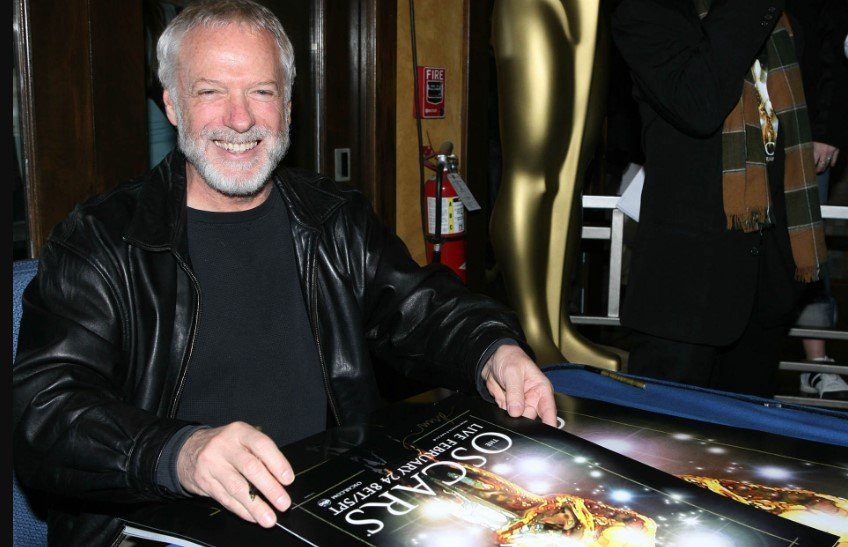Legendary movie poster artist Drew Struzan passed away on October 13, 2025, at age 78 after a long battle with Alzheimer’s disease. His death has sparked global tributes from fans, filmmakers, and stars, celebrating his timeless artwork that shaped cinema promotion for decades.
Remembering a Poster Legend
Drew Struzan left an indelible mark on Hollywood with his hand-painted posters that captured the essence of blockbuster films. Born in 1947, he rose to fame in the 1970s and 1980s, working closely with directors like Steven Spielberg and George Lucas.
His style blended realism with dramatic flair, often using airbrush and acrylic paints to create vibrant, storytelling images. Over his career, Struzan designed more than 150 posters, turning simple ads into collectible art pieces that fans still cherish today.
Struzan’s influence extended beyond movies into books and album covers, but his film work remains his crowning achievement. Recent online discussions highlight how his posters inspired new generations of artists in digital design.

Tributes Pour In from Hollywood Icons
Following the news of his passing, prominent figures in the film industry shared heartfelt messages. George Lucas praised Struzan for bringing magic to Star Wars visuals, calling him a true visionary who defined an era.
Steven Spielberg echoed similar sentiments, noting how Struzan’s art elevated films like Indiana Jones to cultural icons. Social media platforms buzzed with posts from fans and celebrities, sharing favorite posters and personal stories.
One touching tribute came from actors who appeared in his artwork, recalling how Struzan’s designs captured their characters’ spirits. These reactions show the deep respect for his contributions, especially as movie marketing shifts to digital formats.
Online communities organized virtual galleries to showcase his work, drawing thousands of views in days. This outpouring reflects Struzan’s lasting impact on pop culture.
Family members shared that despite his illness, Struzan remained passionate about art until the end. His legacy continues through exhibitions and books dedicated to his techniques.
Iconic Posters That Defined Generations
Struzan’s posters often featured bold compositions with heroes, villains, and epic scenes that teased the story without spoilers. His work for franchises like Star Wars and Back to the Future became synonymous with adventure and excitement.
For instance, the Star Wars Episode IV poster from 1977 showcased Luke Skywalker in a heroic pose, setting the tone for the saga’s visual identity. Similarly, his Indiana Jones designs evoked mystery and thrill, drawing audiences into theaters.
Critics and fans agree that Struzan’s art stood out in an age of photographic posters, offering a handcrafted feel that’s rare today. Recent auctions of his original pieces have fetched high prices, underscoring their value.
- Star Wars: A New Hope (1977) – Heroic figures against a cosmic backdrop.
- Back to the Future (1985) – Time-travel chaos with Michael J. Fox in focus.
- Indiana Jones and the Temple of Doom (1984) – Adventurous scenes full of action.
These examples highlight how Struzan blended emotion and narrative into single images.
Challenges and Triumphs in His Career
Struzan faced tight deadlines that tested his creativity, like the 24-hour rush for John Carpenter’s The Thing in 1982. Without references, he improvised a mysterious figure that perfectly matched the film’s paranoia theme.
His approach involved quick sketches followed by detailed painting, often working through nights to meet studio demands. This dedication led to some of his best work, even under pressure.
In later years, Struzan stepped back from major projects but returned for special editions, like Star Wars prequels. His battle with Alzheimer’s limited his output, but he inspired many through interviews and documentaries.
| Film | Year | Key Elements in Poster |
|---|---|---|
| The Thing | 1982 | Faceless figure in snow, radiating light |
| Big Trouble in Little China | 1986 | Chaotic mix of characters around Kurt Russell |
| Blade Runner | 1982 | Futuristic cityscape with dramatic portraits |
| E.T. the Extra-Terrestrial | 1982 | Touching finger glow against starry sky |
This table captures a snapshot of his innovative designs.
Despite industry changes, Struzan’s traditional methods remind us of artistry in film promotion. His story encourages aspiring artists to value craftsmanship over speed.
Lasting Impact on Modern Cinema
Today’s movie posters often use digital tools, but Struzan’s influence persists in homages and retro styles. Films like recent Star Wars entries nod to his aesthetic in their marketing.
Collectors seek out his prints, with some selling for thousands at conventions. Educational programs now teach his techniques, ensuring his methods live on.
Struzan’s work also sparked discussions on the role of art in entertainment, especially as AI-generated images emerge. His human touch sets a benchmark that’s hard to replicate.
As fans mourn his loss, many are revisiting his portfolio online, discovering hidden gems from lesser-known films.
Share your favorite Drew Struzan poster in the comments below, and pass this article along to fellow movie lovers to keep his memory alive.








